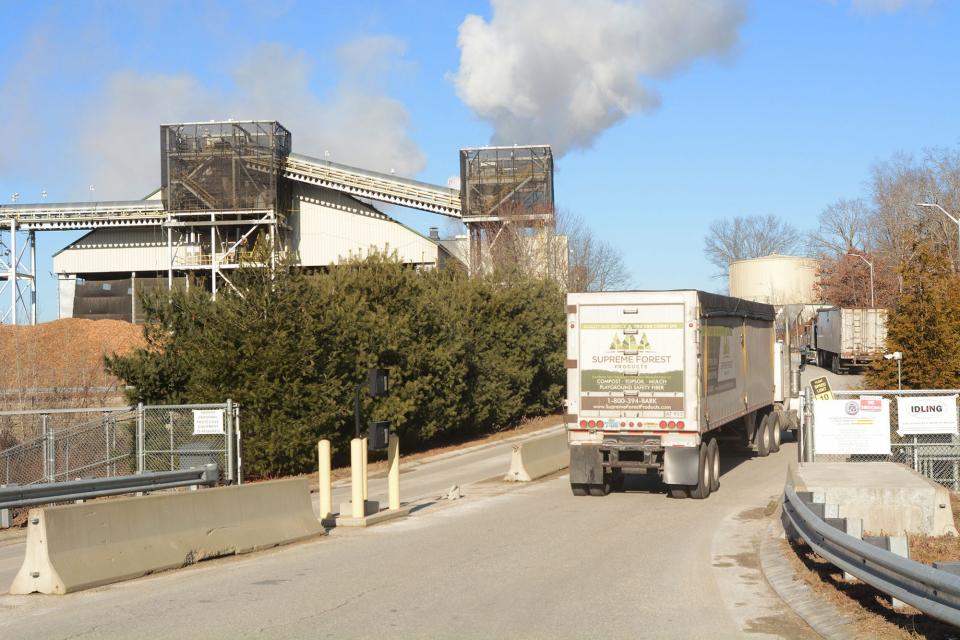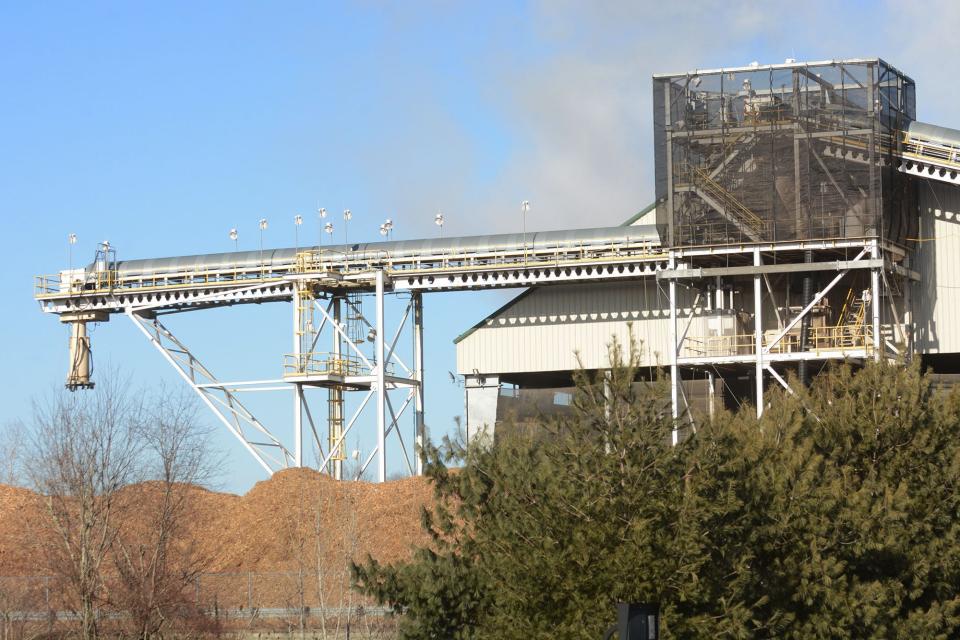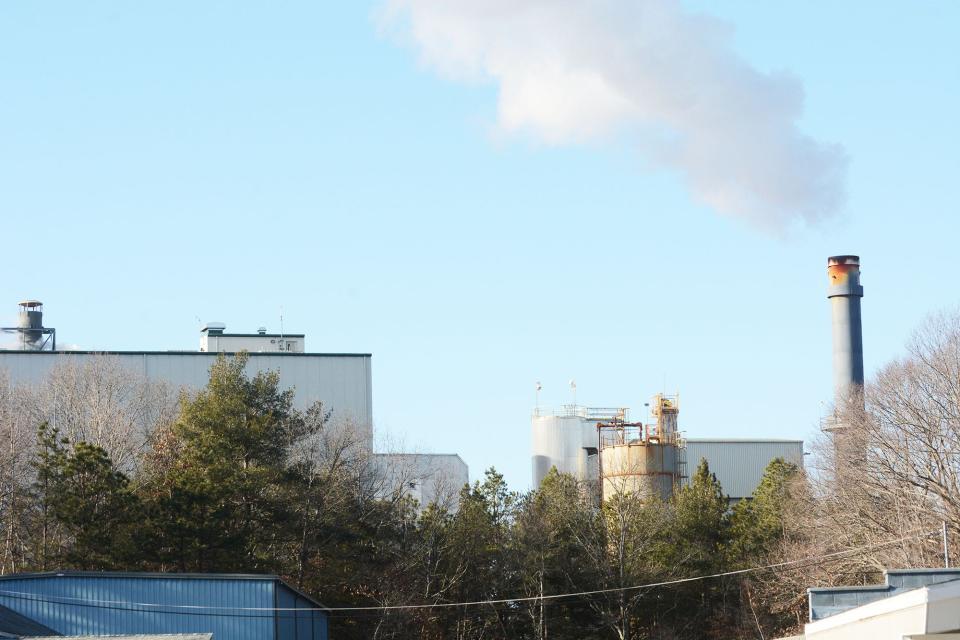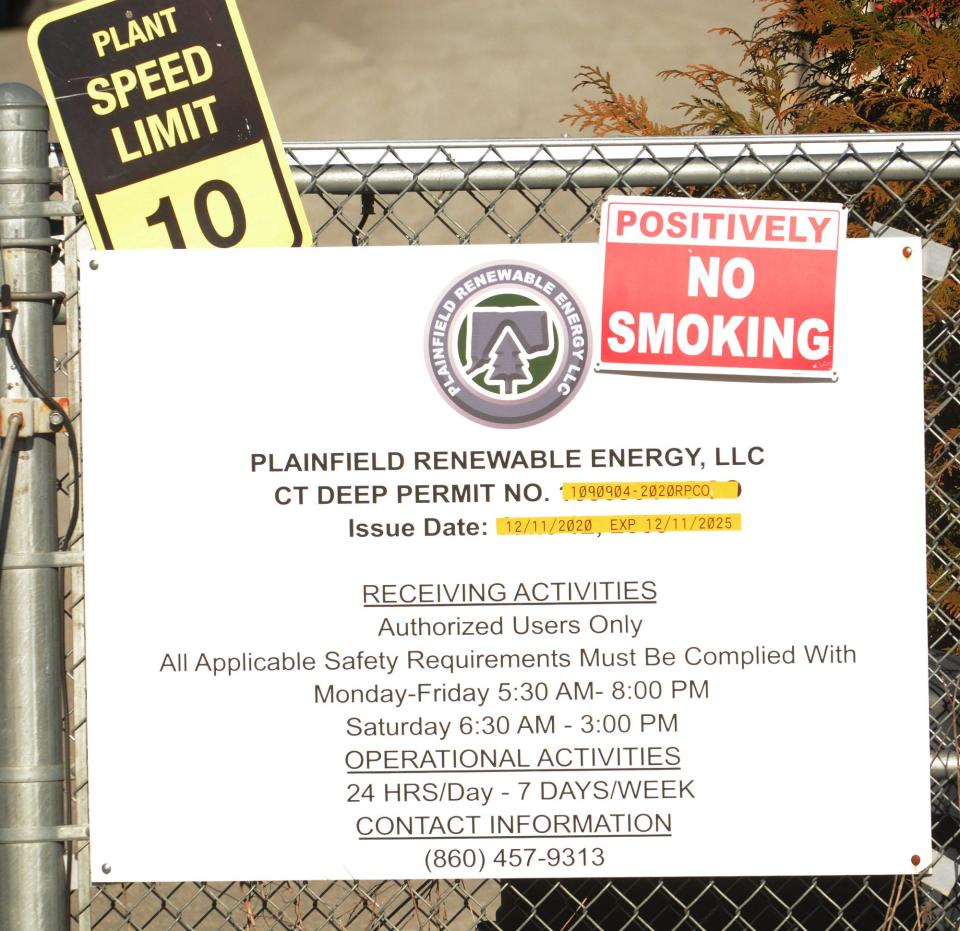Gallup's Quarry was so polluted the EPA took over. Here's how much it pays Plainfield now.
PLAINFIELD — Federal environmental experts in the coming months will put the finishing touches on their latest review of a Plainfield Superfund site now home to an energy plant expected to funnel more than $1 million in tax revenue to the town this year.
The former Gallup’s Quarry property off Route 12 is one of 14 Superfund sites in New England where the U.S. Environmental Protection Agency will conduct its mandatory five-year reviews aimed at ensuring previous remediation and ongoing monitoring efforts are paying off.
"Ensuring completed Superfund site cleanup work remains protective of human health and the environment is a priority for EPA," said Deb Szaro, the agency’s New England acting regional administrator in a press release. "By completing reviews of the cleanups every five years, EPA fulfills its duty to remain vigilant so that these communities continue to be protected."

Superfund sites are polluted locations that require long-term hazardous material clean-up efforts and monitoring. At Gallup’s Quarry, that pollution took the form of barrels of waste and free-liquid chemicals illegally dumped in the 1970s, according to a 2017 EPA report.
For several months beginning in mid-1977, the owner of the former sand and gravel quarry, once used as an asphalt batching plant by the state Department of Transportation, accepted chemical waste without a permit, prompting the 29-acre property to be placed on the EPA’s National Priorities List in 1989.
More: A look behind use of force by Norwich police: What does it mean? How often does it happen?
Chemicals containing volatile and semi-volatile organic compounds and heavy metals were dumped in three areas, including into a seepage bed that was razed during construction of the nearby Plainfield Renewable Energy Plant, a 37.5-megawatt biomass facility that supplies power to Connecticut Light & Power.
In all, more than 1,600 drums, 5,000 gallons of liquid waste and 3,500 tons of contaminated soil were removed by the state Department of Energy and Environmental Protection before long-term monitoring began.
More than 50 contaminants were initially identified on the property and though there is no exposure risk via soil, it was determined the chemicals had the potential of leaching into groundwater.
More: 23 bridges in New London County rated in poor condition. What inspection data tells us.
According to the 2017 federal report, water - both ground-level and surface - has been sampled yearly since 2009 though a series of monitoring wells with soil samples taken every five years. The sampling is done by a contractor hired by 23 of the 40 “potentially responsible parties,” or individuals or companies found liable for the contamination.

Dan Keefe, the EPA’s Superfund New England section chief, said the monitoring is done with agency oversight to ensure EPA’s monitored attenuation approach to the site, or one in which residual chemicals are allowed to break down naturally over time, is occurring.
“The other remedy is to institute future land-use restrictions,” he said. “The biggest risk-reduction there was the removal of the chemicals by the state.”
Land-use restrictions were placed on six property parcels to prevent soil disturbance and groundwater is not used as a potable supply.
More: Local Flavor: Here are five places to grab a bite and warm up in Eastern Connecticut
“EPA has completed four Five-year Reviews for the site, and has determined that the cleanup is protective of human health and the environment,” the agency found, according to a January status statement. “There is no current use of, or exposure to, site media containing contaminants in excess of the applicable State and Federal standards identified for the site.”
John Bryant, EPA’s remedial project manager for the Plainfield site, called the initial clean-up a success and various “static” control measures, including fences and signs were placed throughout the property to prevent unauthorized access.

Plainfield could see $1 million in taxes annually from biomass plant
In January 2014, after a decade of planning, the Plainfield Renewable Energy Plant was fired up on a portion of the quarry land on Mill Brook Road south of the main contamination site – the only business operating on the property.
The Class 1 plant, a 12-story building laced with conveyors, has the potential to power the equivalent of 37,000 homes using a variety of fuel sources, including construction and demolition wood debris, recycled wood pallets and land-clearing materials.
More: Public will have a say on options for Plainfield annex building: Fix it or take it down
First Selectman Kevin Cunningham said since the quarry site is on private property, the town has little to do with the site – except to sit back and take in tax revenue.
“Officials will let us know when they plan to conduct their reviews, but that’s it for us,” he said. “It’s a producer of tax revenue and jobs for the town. And though there are only a few people actually working at the plant, there are other jobs created by the deliveries of materials to the site.”
According to the tax collector’s office, the plant is due to provide the town this year with roughly $1.4 million in tax revenue from real estate, personal property and other bills.

Keefe said the EPA has been “ahead of the curve” in the last two decades in pursuing re-use and re-purpose strategies for Superfund sites, like Gallup’s Quarry.
“Whether that’s for passive use, like recreation or solar panels, or for more active things, like the bio-mass plant,” he said.
More: For Norwich schools, the struggle to remain open while omicron surges is 'day-to-day'
Keefe said the new report, expected to be released in the fall, will incorporate the latest monitoring information, which will be examined for any data trends. He said the five-year reports will continue to be issued in perpetuity.
“That happens with any Superfund site on the priority list that doesn’t allow for unrestricted access or use,” he said.
John Penney can be reached at jpenney@norwichbulletin.com or at (860) 857-6965.
This article originally appeared on The Bulletin: Plainfield Superfund property on Route 12 up for EPA review

